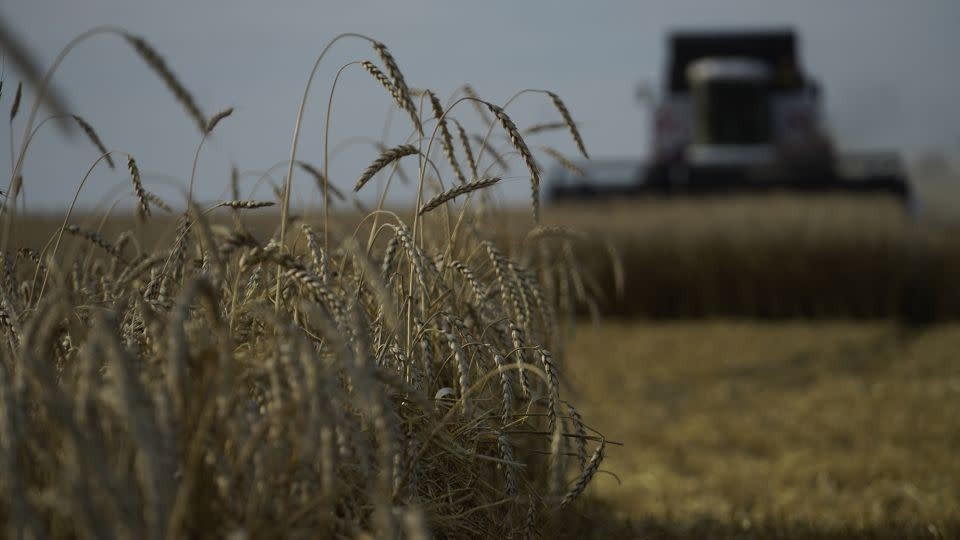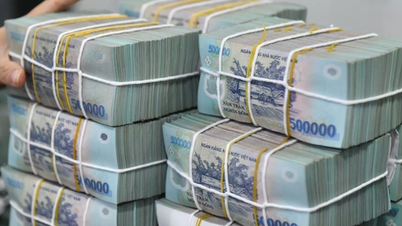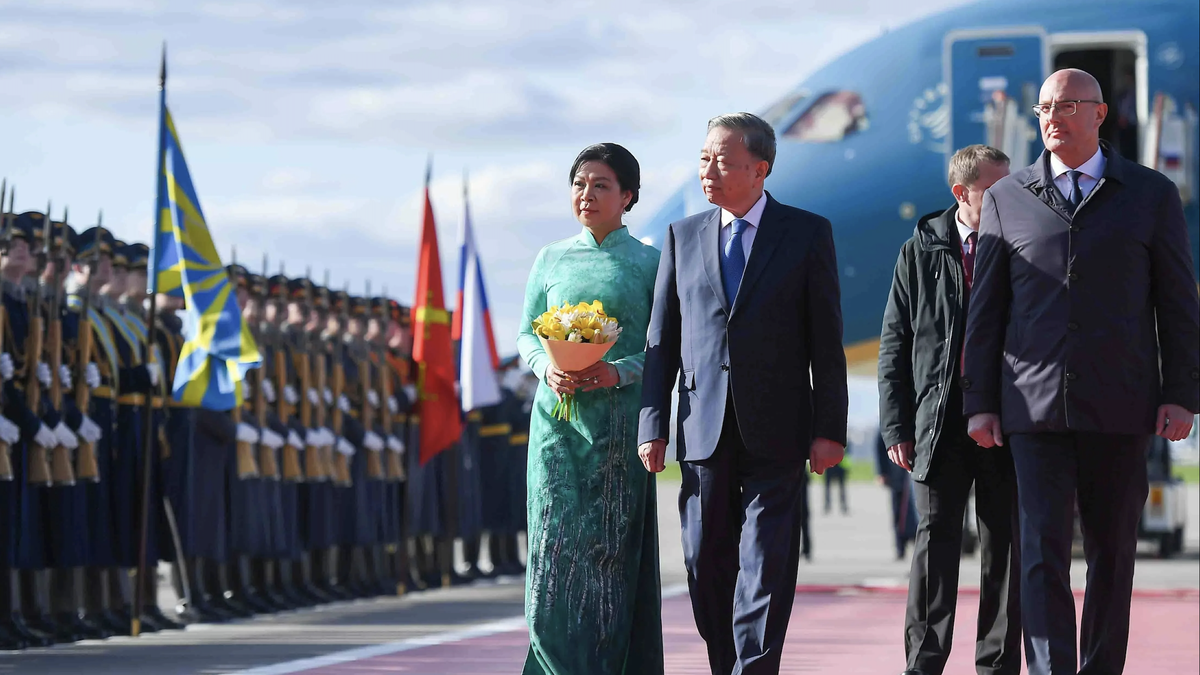 |
| Farmers harvest wheat in Russia. (Source: AFP) |
Despite Moscow's claims that Western sanctions have "choked" food exports, Russia's share of the global wheat market has increased significantly since it launched a special military operation in Ukraine in February 2022.
Wheat is soft power
Russia is expected to have a record-breaking wheat harvest this year, the second year in a row the country has achieved such success.
Russia will export 47.2 million tons of wheat in the current crop year, which begins in the summer, according to data from S&P Global. That would account for 22.5% of global wheat exports, a market-leading share. Two years ago, Russia exported 32.6 million tons, or 16% of the market.
During the same period, Ukraine's share of global wheat exports fell from 9% to an expected level of more than 6%.
Bloomberg news agency noted that the above figures continue to strengthen Russia's position in the global market as the number one exporter.
At the BRICS summit in late August, Russian President Vladimir Putin said: “Our country is capable of replacing Ukrainian grain, both in terms of trade and in terms of free aid to poor countries.”
Caitlin Welsh, director of the global food and water security program at the Center for Strategic and International Studies, said: "Russia is aiming to 'wipe out' Ukraine's agricultural sector.
Agriculture is vital to Ukraine's economy. Before the military campaign, the sector accounted for 11% of President Volodymyr Zelensky's country's GDP. This would be a huge bonus for Moscow."
According to experts, the commitment to “free grain aid to poor countries” emphasized by President Putin reflects Moscow's desire to continue building alliances with developing countries - especially with African nations.
Those comments came just weeks after Russia withdrew from the Black Sea Grain Initiative (July 17) – which was intended to ensure the safe passage of grain ships from Ukrainian ports.
Moscow's withdrawal from the grain deal is a major new test for Europe's united "front" in supporting Kiev, some analysts say.
In May, the European Commission (EC) banned imports of Ukrainian wheat, corn, rapeseed and sunflower seeds to Bulgaria, Hungary, Poland, Slovakia and Romania. These countries said the influx of cheap, duty-free grain from Ukraine was driving down prices for domestically produced products, hurting local farmers and the economy.
Farmers in five countries neighboring Ukraine have also repeatedly protested against the surplus of grain products in the domestic market, affecting agricultural prices and pushing people and businesses to the brink of bankruptcy.
The ban expired on September 15, and the EC decided to lift the temporary restrictions on grain from Ukraine. However, Poland, Hungary and Slovakia still decided to impose unilateral restrictions on grain imports from the country.
When the EU refused to extend the restrictions, some countries unilaterally imposed import bans, which caused friction between Kiev and its staunch ally - Poland.
“Russia benefits from the potential disunity of EU countries,” said Caitlin Welsh.
Tensions between Ukraine and Poland have eased for now. The two sides have agreed to speed up the transit of Kiev's grain to third countries.
 |
| A combine harvester harvests wheat in the Novosibirsk region of Siberia in September. (Source: AFP) |
Wheat prices fall on 'full granary'
Russian wheat exports are at an all-time high. In May, the US Department of Agriculture predicted that Moscow would export a record 46 million tonnes of wheat in the 2022-23 crop year.
Wheat prices spiked after the start of the special military operation and then fell, hitting their lowest level in more than three years late last month. Experts say record wheat exports from Russia helped drive prices down.
Russia’s “full grain bowl” is a blessing for consumers hit by the cost-of-living crisis, Bloomberg reported. Record shipments have sent prices down to their lowest level in nearly three years.
This also means that record exports may not guarantee that Russia will maintain record revenues.
Andrey Sizov, who runs SovEcon, a consultancy for the wheat and corn industry, noted that Moscow has tried to enforce an unofficial floor price for wheat exports. Reuters cited two sources as saying that the Russian government wants exporters to ensure that the prices paid to farmers are high enough to cover average production costs.
But other players are entering the market and competing with Russia. According to Mr. Sizov, a closely watched recent tender to sell wheat to Egypt was won by Romania, which offered $256 a ton, while Russian sellers offered $270 a ton.
Paul Hughes, agricultural economist at S&P Global, believes Russia's biggest challenge will come if sellers in the EU - another major wheat exporter - lower their prices.
"At that time, Russia will have a choice. One is to maintain the floor for export prices and give up its export market share to the EU. The other is to give up the floor, reduce prices and maintain the export speed," he affirmed.
Now, there is no denying that Ukraine is in a difficult position. S&P Global expects its wheat exports to fall by 3.7 million tonnes to 13.4 million tonnes in 2023-24, a nine-year low.
"With global wheat supplies significantly reduced, prices can still be raised. And if wheat prices increase, Russia will be in a good position to benefit," commented Ms. Welsh.
Source



![[Photo] Magical moment of double five-colored clouds on Ba Den mountain on the day of the Buddha's relic procession](https://vphoto.vietnam.vn/thumb/1200x675/vietnam/resource/IMAGE/2025/5/9/7a710556965c413397f9e38ac9708d2f)





























![[Photo] General Secretary To Lam begins official visit to Russia and attends the 80th Anniversary of Victory over Fascism](https://vphoto.vietnam.vn/thumb/1200x675/vietnam/resource/IMAGE/2025/5/8/5d2566d7f67d4a1e9b88bc677831ec9d)


































































Comment (0)